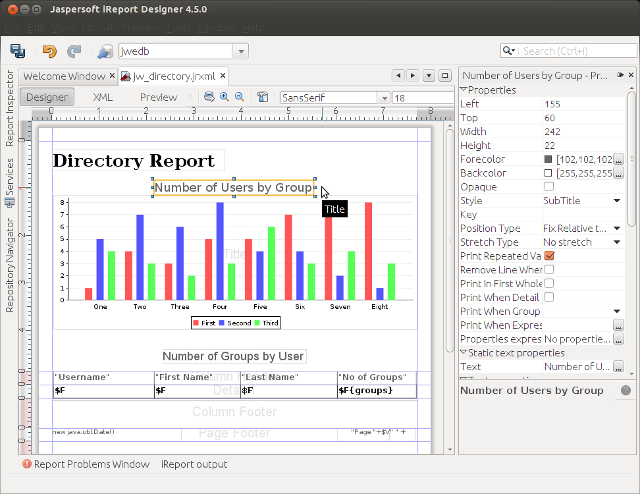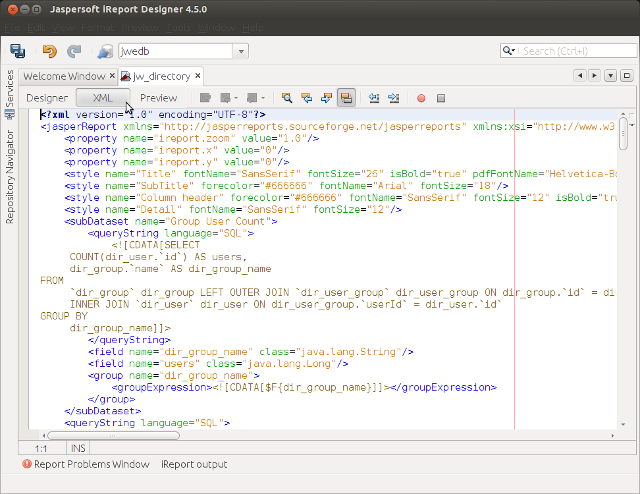Introduction
JasperReports Userview Menu is a userview plugin that allows more complex reporting requirements through integration with JasperReports. By using JasperReports report definitions, sophisticated reports with custom layouts and graphs can be generated and viewed directly within a userview, with optional export to PDF and Excel.
NOTE: This feature is not meant to be a replacement for full-function reporting servers like JasperReport Server (http://community.jaspersoft.com/project/jasperreports-server). However, in many cases you do not need such advanced reporting features, and this plugin allows for easy embedding of sophisticated reports directly within a userview.
What is JasperReports? |
What is iReport Designer? |
How to Use the JasperReports Userview Menu
1. Design Report Using the iReport Designer
- Download and install iReport Designer from http://community.jaspersoft.com/project/ireport-designer.
- Get started with iReport Designer to design your report. Documentation on getting started is available at http://community.jaspersoft.com/wiki/getting-started-ireport-designer.
- Once the report has been designed, switch to XML View to view the source XML definition. Copy the XML. You can also save the report as a .jrxml file and open the file to copy the contents.
2. Add the JasperReports Menu in the Userview
- In the Joget Workflow web console, launch the Userview Builder for the desired userview in your app.
- Drag the JasperReports Menu element into the desired menu location in the userview.
3. Configure the JasperReports Menu
Click on Edit and configure the properties in the property dialog, as follows:
Configure JasperReports
Custom ID |
Optional ID to represent this element; otherwise, a system generated ID will be created. (It is recommended that you enter this ID as it will be seen in the userview URL.) |
Label |
Name displayed in the userview menu |
Default Output |
Preselected output (Only HTML is available at this time.) |
Export Options |
Allows the report to be exported to PDF and/or Excel formats when checked |
JasperReports Definition (JRXML) |
XML definition of the report designed using iReport Designer (Copy the XML from the “XML View” tab in iReport or directly from the .jrxml file contents.) |
Configure Datasource
Datasource |
The option of either Default Datasource (which uses the current Joget database), or Custom Datasource (which allows you to key in custom database connection details.) |
Configure Custom Database
JDBC Driver |
JDBC driver for the desired database |
JDBC URL |
JDBC connection URL to the desired database |
JDBC Username |
Database connection username |
JDBC Password |
Database connection password |
UI
Custom Header |
Optional custom header content to be displayed at the top of the report |
Custom Footer |
Optional custom footer content to be displayed at the bottom of the report |
4. View the JasperReports Menu
Once the configuration has been done, the report will be generated when the userview menu page is accessed.




